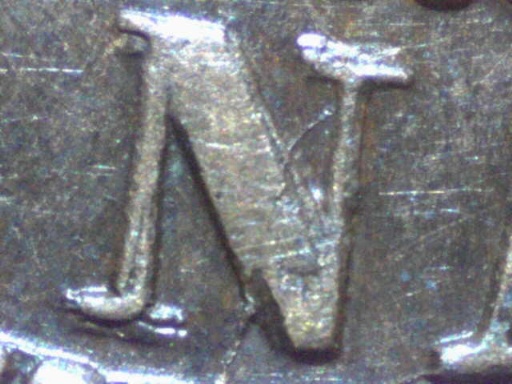Page 1 of 1
1882-H Canadian Cent
Posted: Thu Feb 09, 2023 9:45 am
by KEN66
I was checking my 1882-H Canadian large cents for there value. In the price guide it lists obverse #1 and obverse #1a what is the deference? Also with obverse #2 and obverse #2 obverse #1? Any help would be appreciated. Thank you.
Ken
Re: 1882-H Canadian Cent
Posted: Thu Feb 09, 2023 9:49 am
by troubadour
Re: 1882-H Canadian Cent
Posted: Thu Feb 09, 2023 10:42 am
by KEN66
Thank you so very much. That really helps a lot. You guys always know the answers.
Ken
Re: 1882-H Canadian Cent
Posted: Thu Feb 09, 2023 11:06 am
by KEN66
It also lists a obverse #2/obverse #1 how can you have both?
Ken
Re: 1882-H Canadian Cent
Posted: Thu Feb 09, 2023 11:19 am
by Bill in Burl
The 1882's have die varieties second only to the 1859's. You have Obverses 1, 1a, 1a/1, 2, and 2/1. With the Obv 1a and 2, the Queens portrait (especially the neck truncation tip) were slightly different than the Obv 1. Since each planchet took 2-4 slams of the press, with sometimes days or weeks between compressions, a partially made planchet may have been initially struck with a different die. That is why you have 1a/1 Obverses and 2/1 Obverses.
With the Obv 1 variants, you also have single serif N's (since all of the Obverses were from 1876 dies which all had single serif N's), as well as all types of repunched (handpunched) corrections to the single serifs to make them full. The mint was still trying to get their act together with the presses and fixtures, so you can find both mechanical (machine) doubling in Victoria, Dei, Gratia and Regina due to dies loose in the keepers that needed to be tightened after xxx strikes. Some have almost ALL the lettering doubled, along with handpunching of some of the lettering as well, just like some of the scarce 1881's. Those with many letters involved with MD and repunching are called "heavy repunch doubling".
As stated before, they were reusing the 1876 dies for the 1's and 1a's, as well as for all the 1881's and they were getting tired. Some of the N repunches are hugely offset like the guy with the hammer couldn't get it right. The '82's are great to collect, so keep your eyes peeled on the Obverses, as well as the date.
Here's just One example of what the handpunching that they did to convert single-serif N's into full serif N's. You will see many variations, some with large offsets like this one, others closer to the mark:

- single serif.corrected 1882.jpg (75.83 KiB) Viewed 9939 times
Re: 1882-H Canadian Cent
Posted: Thu Feb 09, 2023 1:14 pm
by Bill in Burl
Here are some values, but they are, by no means, complete or accurate:
https://www.coinsandcanada.com/coins-pr ... -1876-1901
Re: 1882-H Canadian Cent
Posted: Thu Feb 09, 2023 1:18 pm
by KEN66
Thanks again. There sure are a lot to learn about the large cents. That's why I find them interesting. I am sure there will be more questions.
Ken
Re: 1882-H Canadian Cent
Posted: Tue Mar 14, 2023 10:51 am
by rjd65
Bill, I was always under the impression that the different obverse varieties of 1881H and 1882H were due to different punches being used to sink the dies, thus creating hybrid dies, and these dies would eventually be used to mint the cents from blank planchets. At times, the legend letters of these obverse dies were manually re-punched.
You stated to Ken; Since each planchet took 2-4 slams of the press, with sometimes days or weeks between compressions, a partially made planchet may have been initially struck with a different die. Did you actually mean to say.... each die took 2-4 pressings of the punch (or sub-punch), with sometimes days or weeks between compressions (or pressings), a partially made die may have been initially pressed with a different sub-punch ?
It seems unlikely, not to mention very inefficient, that a planchet would be struck to create the coin and then re-struck 2 -4 times again?
Ken is correct in saying the 1882H is a fascinating year to study and as you state is undoubtedly the next most variety diverse year after 1859. It would be a monumental task to differentiate all the varieties and unique dies.
Re: 1882-H Canadian Cent
Posted: Wed Mar 15, 2023 2:31 pm
by Bill in Burl
Back in the later 19th century, striking coins isn't like today as the pressures involved were less than now and much older machinery. I was unclear in my post about what took 2-4 slams. I was talking about the die making as they were struck from the master, matrix or submatrix. I used the wrong word(planchet instead of blank), although some coins did need to be struck more than once and the hand-punches took 2-4 whacks as well. It was the dies that had to be repeatedly restruck and, in 1881 (to prepare for the 1882 mintage) you had still the leftover 1876 Obv 1 single serif N dies, the new 1881 & 2 Obv 1a dies, and late the new Obv 2 dies. Mixing up on which partially finished die needed which matrix to strike again presented a problem. You then had double struck Obv 1's, Obv 1a's and Obv 2's along with the combos. Individual cleaning up of the finished dies was done by hand and you have many elements of doubling/tripling due to that punching, not done immediately, and again 2-4 strikes.
I'm getting too old to accurately convey what is in my head to words on paper or a computer. Sorry I misled.